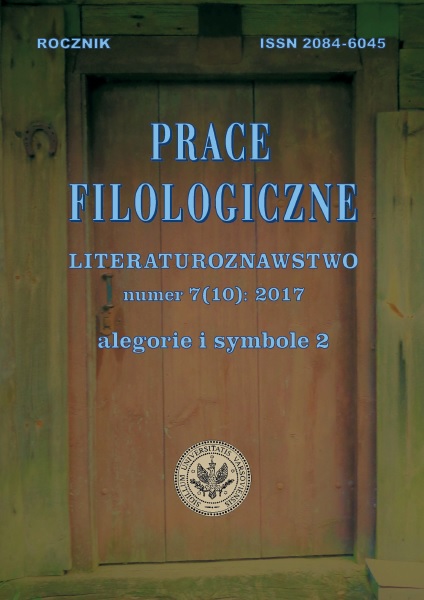Alegorie i symbole proletariatu. Retoryka odpodmiotowienia i upodmiotowienia klasy robotniczej w tekstach poetyckich drugiej połowy XIX wieku
Allegories and symbols of the proletariat. Rhetorics of desubjectification and subjectification of the working class in the Poetry of the second half of the 19th century
Author(s): Paweł TomczokSubject(s): Studies of Literature
Published by: Wydział Polonistyki Uniwersytetu Warszawskiego
Keywords: ekonomia literatury; poezja rewolucyjna; proletariat w literaturze; symbol; alegoria; economy of literature; revolutionary poetry; proletariat in literature; symbol; allegory
Summary/Abstract: The article describes two models of representing proletariat in the Polish poetry of the second half of the 19th century. The first model relates to the image of misery, poverty and weakness and focuses on the frail beings (children, orphans, paupers) faced with the state apparatus or lack of any help from the environment. Various forms of allegories appear in this model very frequently. The second model can be seen in the so called revolutionary poetry. Here, the image of poverty and weakness starts to fulfill a completely different role − the misery of the proletariat is perceived not through the eyes of an outside observer, but by the proletariat itself, although only to see the strength of the weak coming from their number. The same reality is thus depicted in an absolutely different manner − in the first case the image confirms the misery and weakness of the proletariat which can only be changed by an outside philanthropist; in the second case the image induces the sense of empowerment in the proletariat, which − although weak, exploited and humiliated – possesses an inner power to recover from its position. W artykule zostały omówione dwa modele przedstawienia proletariatu w poezji polskiej drugiej połowy XIX wieku. Pierwszy model odwołuje się do obrazu nędzy, biedy, słabości. W tym modelu bardzo często pojawiają się różne formy alegoryczne. Drugi model pojawia się w tzw. poezji rewolucyjnej . Tu nędzę proletariatu widzi nie zewnętrzny obserwator, lecz ma ją dostrzec sam proletariat, po to, by zobaczyć swoją pozycję. Drugi model bardzo wykorzystuje poetykę symbolu. Dwa modele ujęcia tej samej rzeczywistości pokazują zmianę pozycji proletariatu w dyskursie końca XIX wieku.
Journal: Prace Filologiczne. Literaturoznawstwo [PFLIT]
- Issue Year: 2017
- Issue No: 7 (10)
- Page Range: 321-334
- Page Count: 14
- Language: Polish

